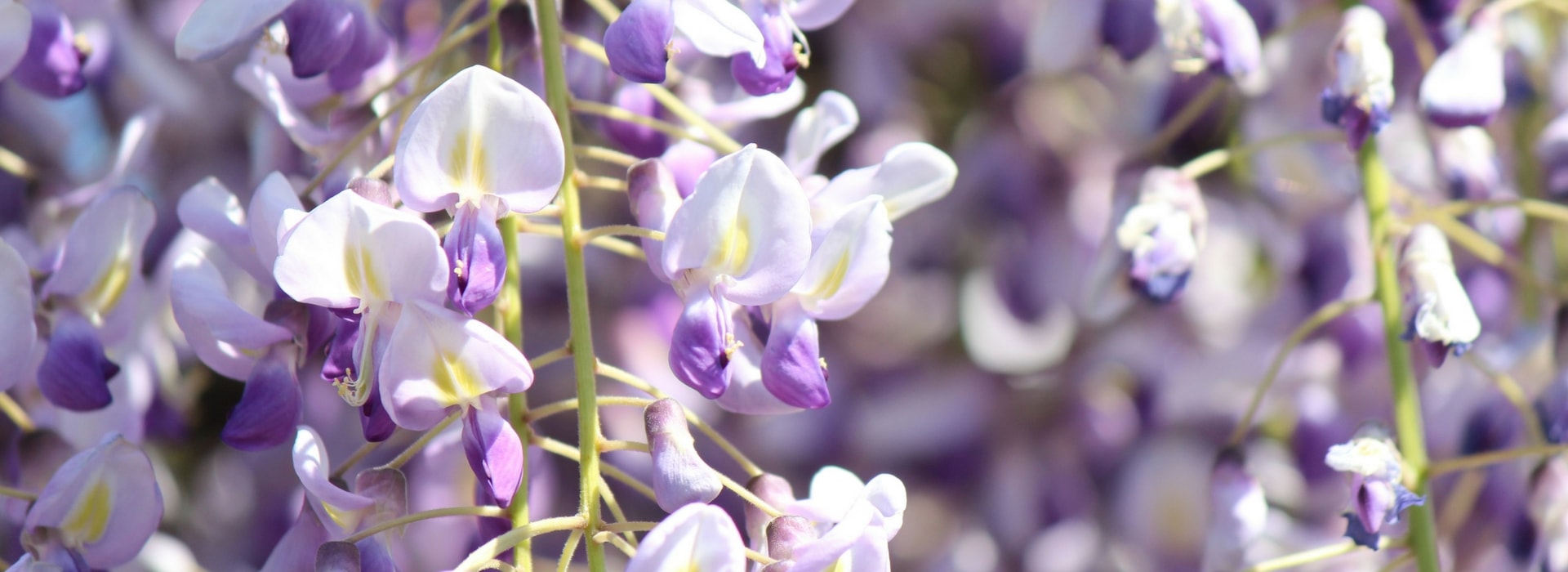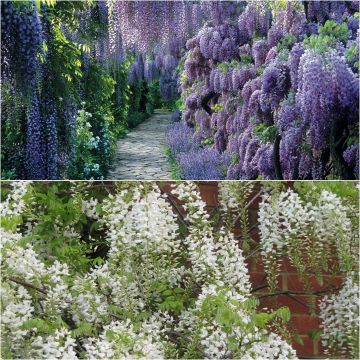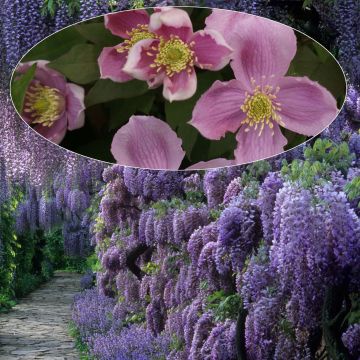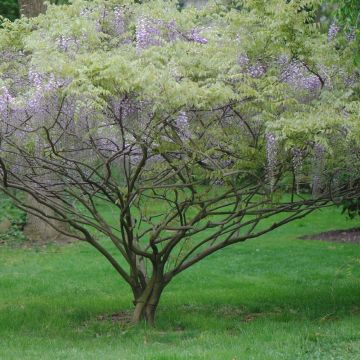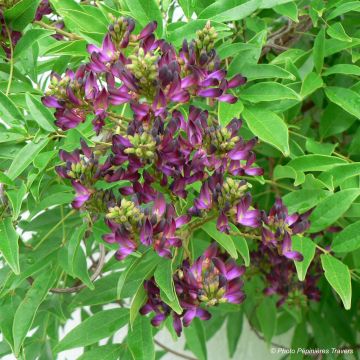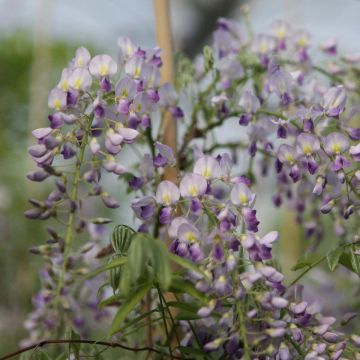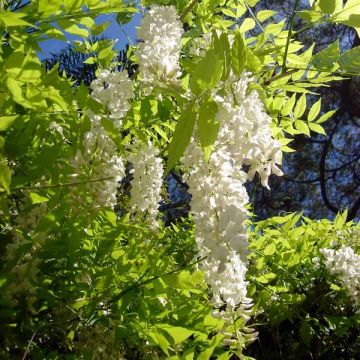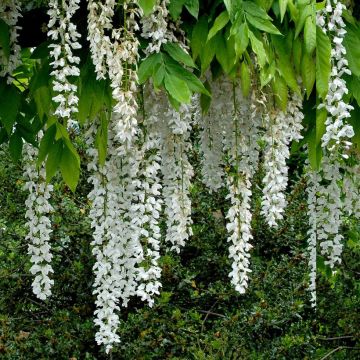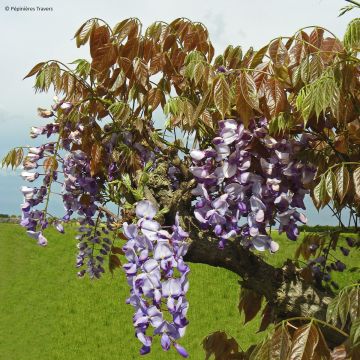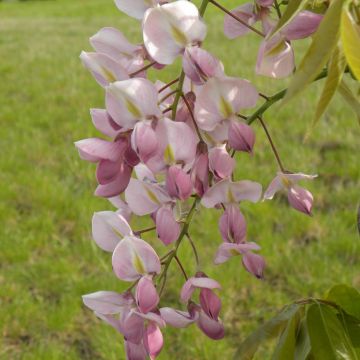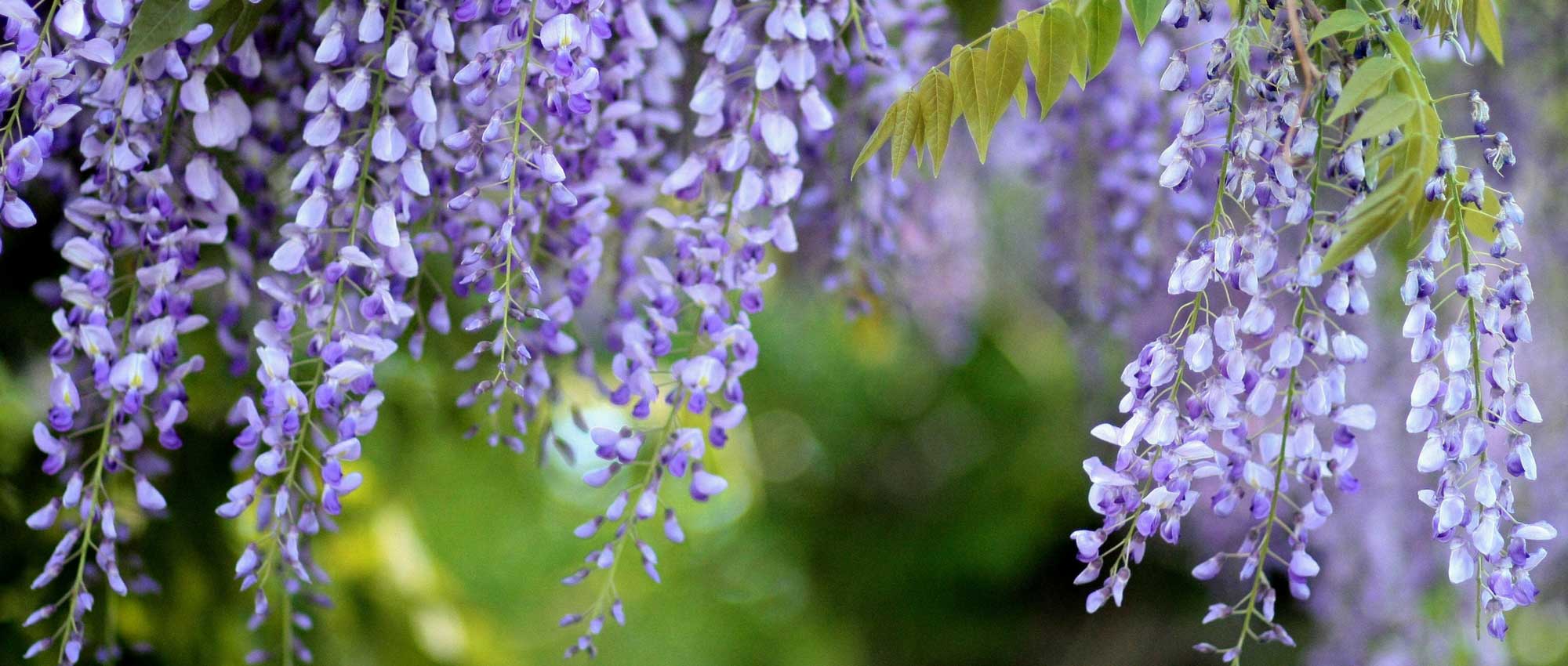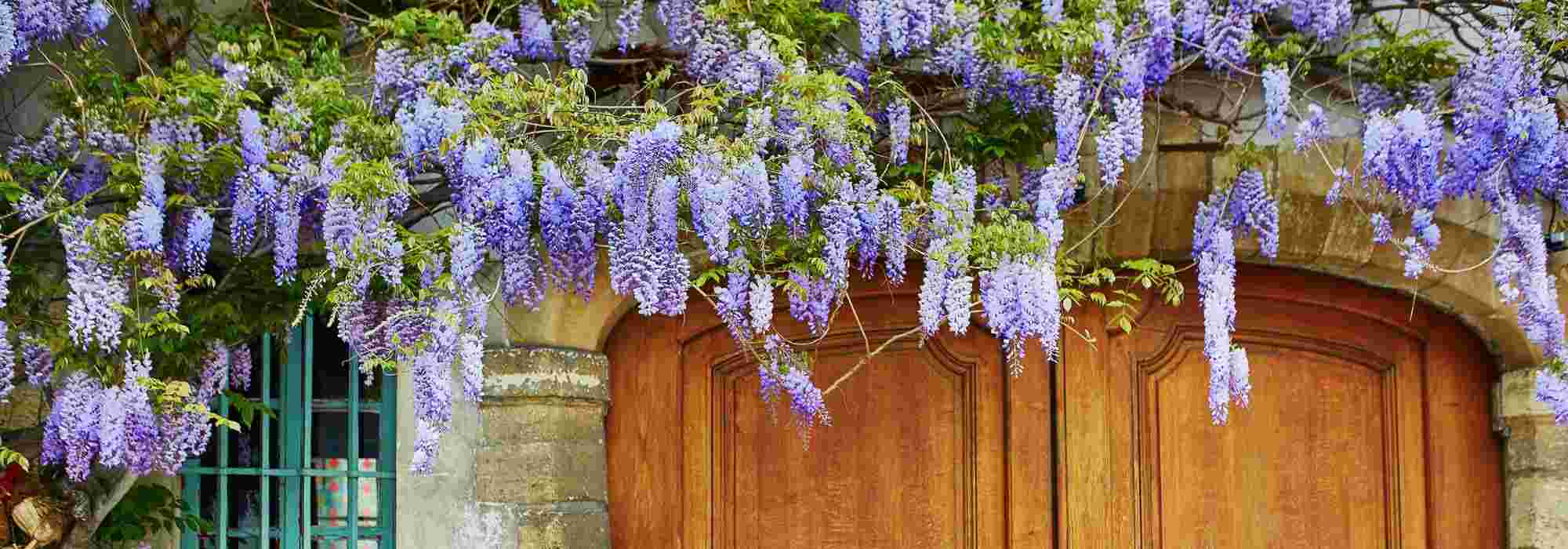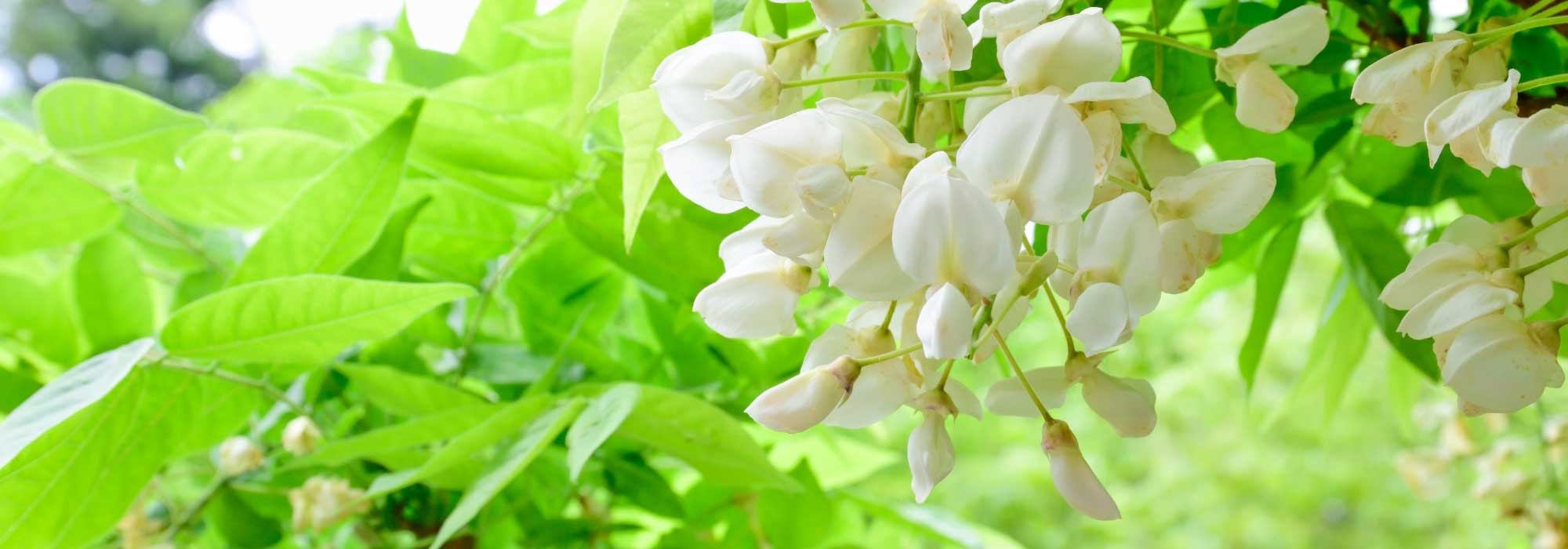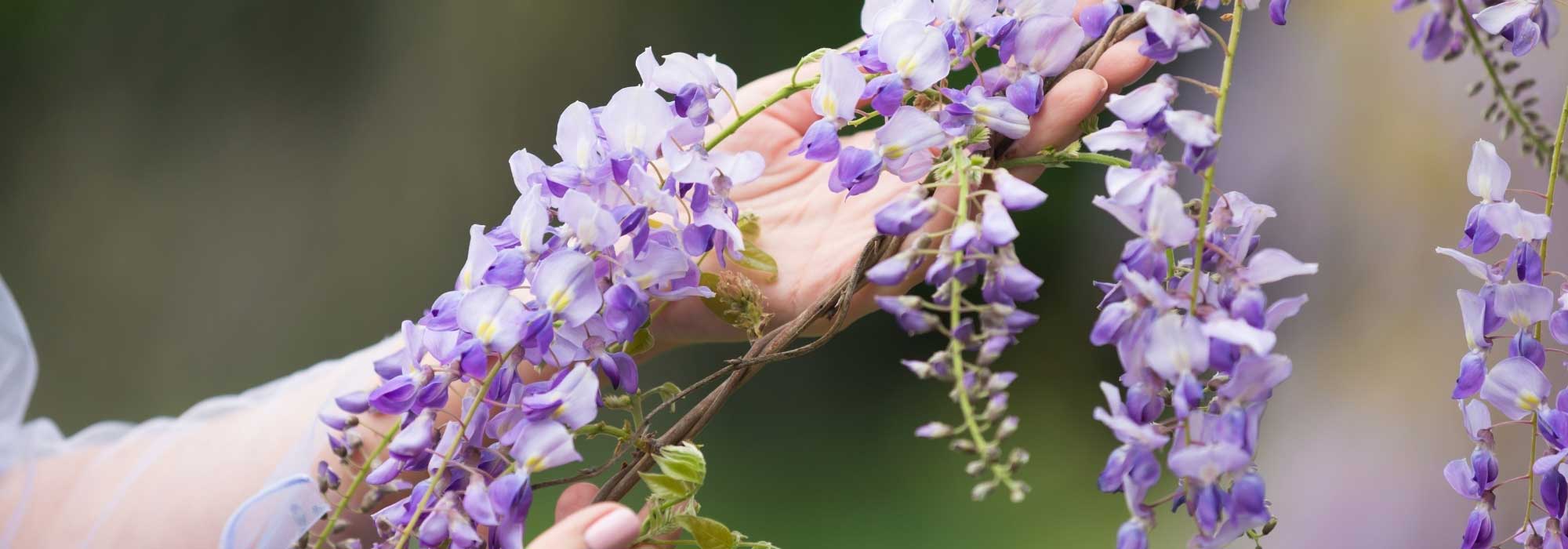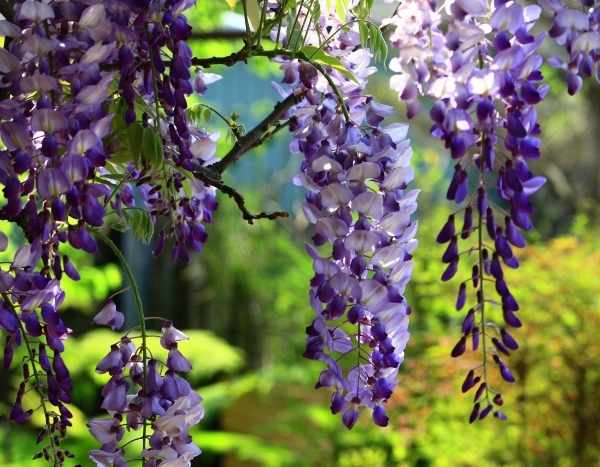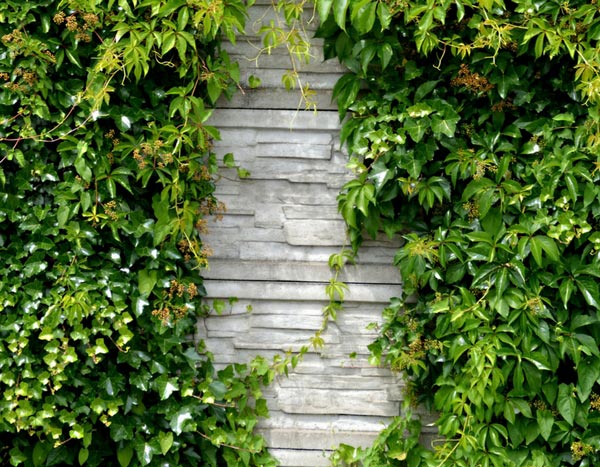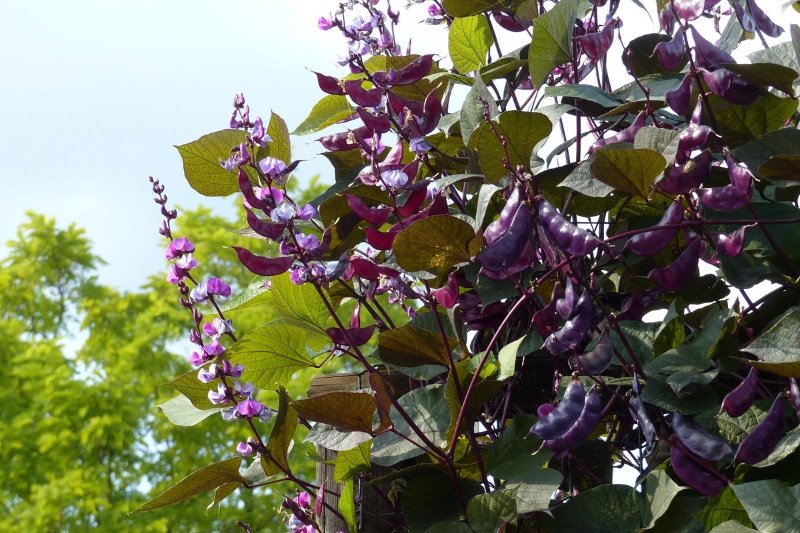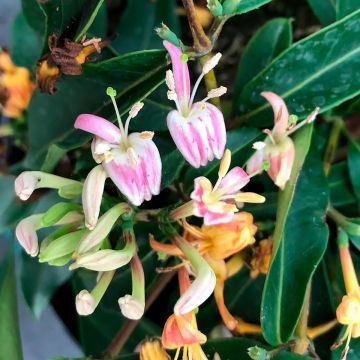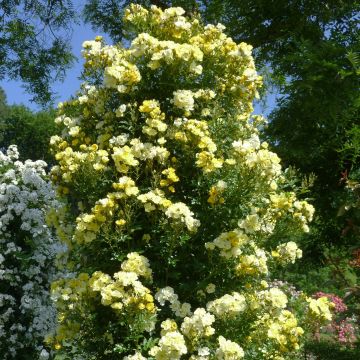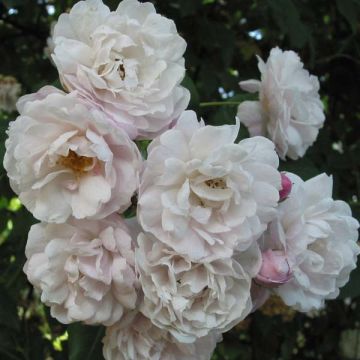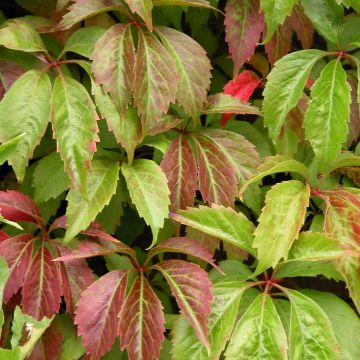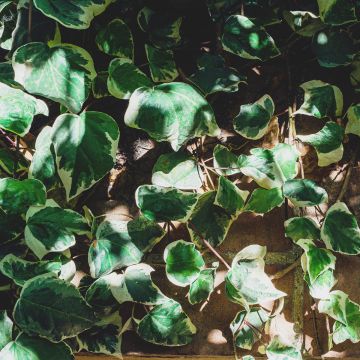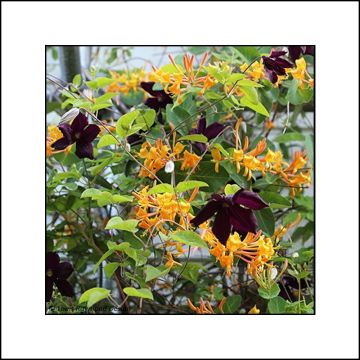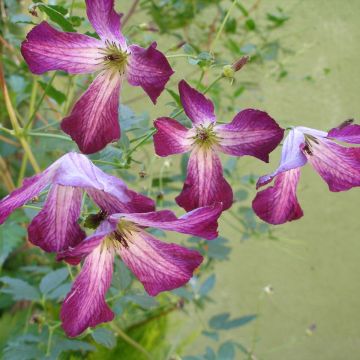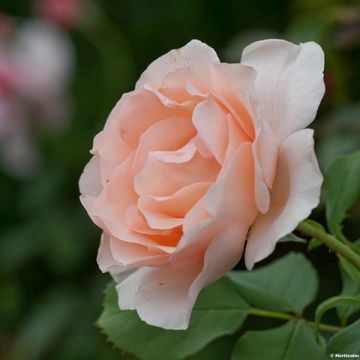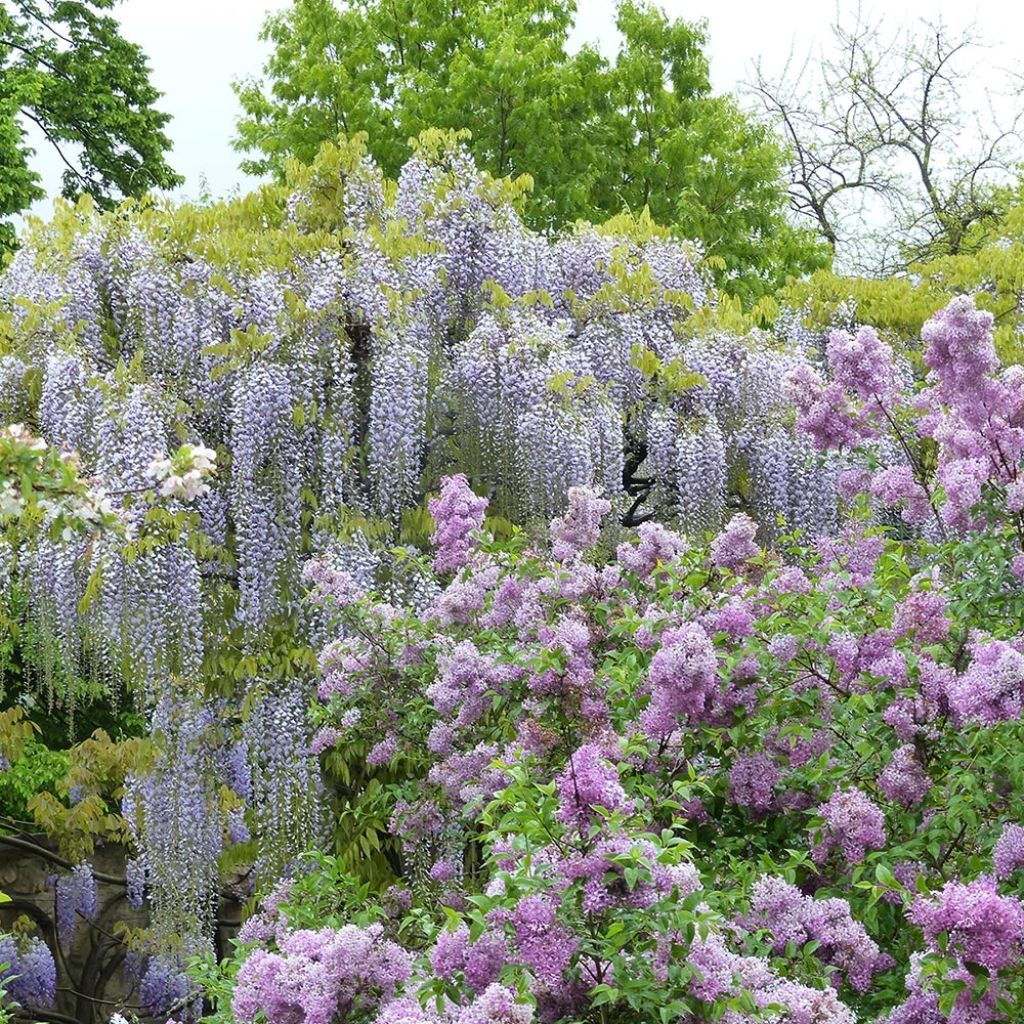

Wisteria floribunda Macrobotrys De Belder
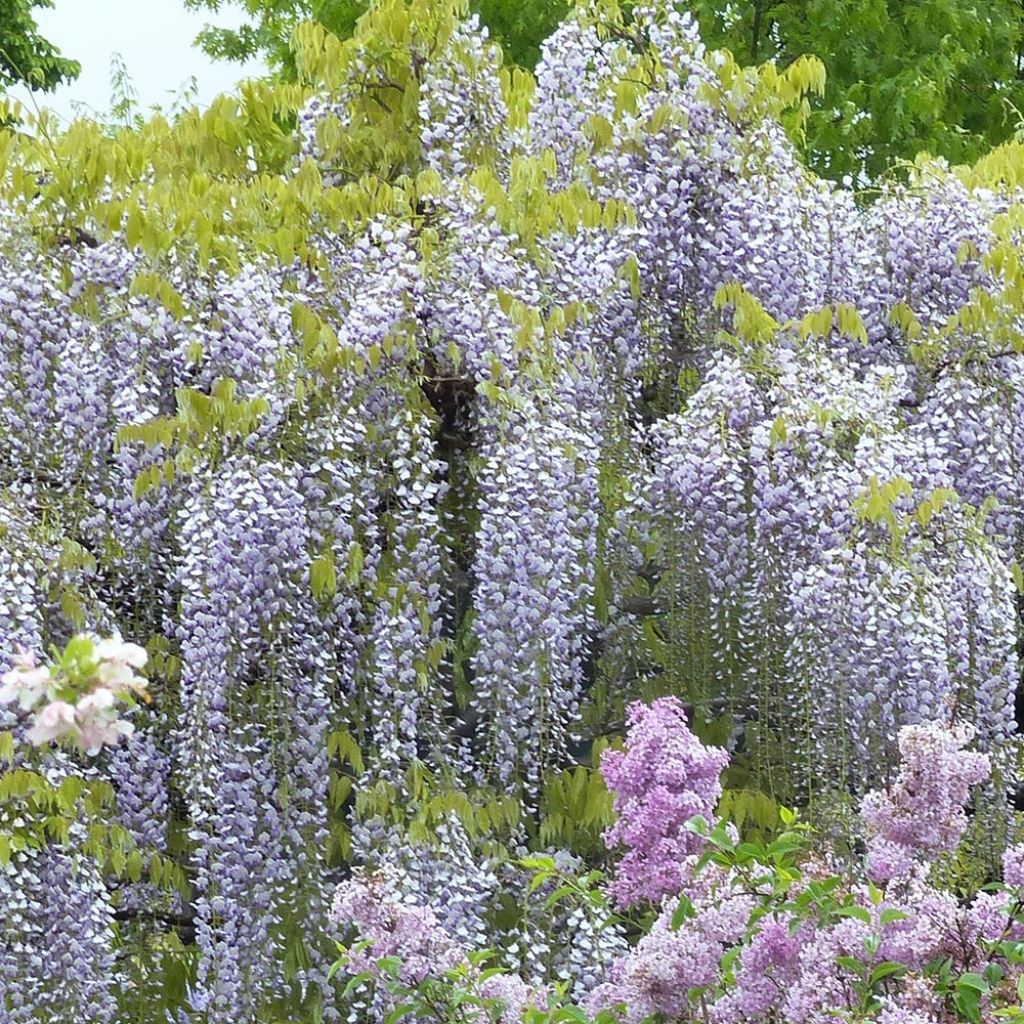

Wisteria floribunda Macrobotrys De Belder
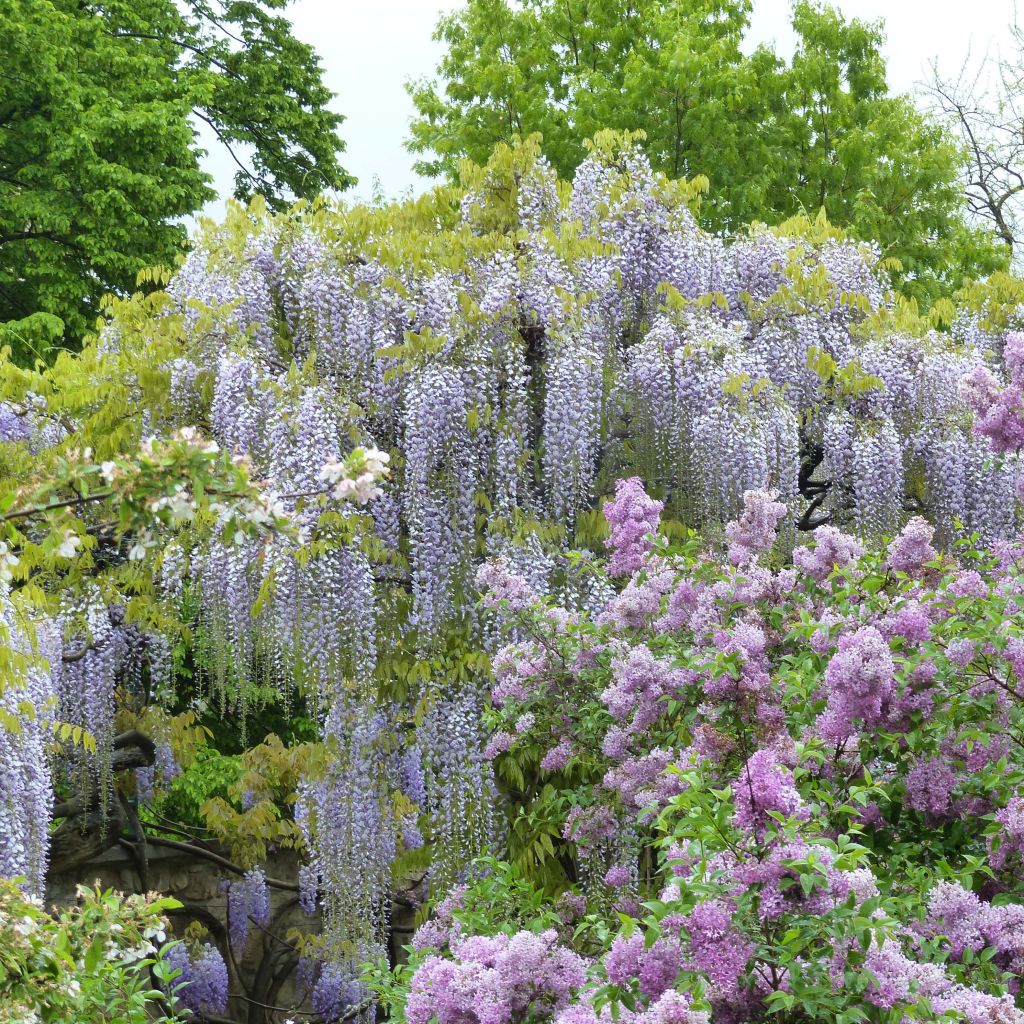

Wisteria floribunda Macrobotrys De Belder
Wisteria floribunda Macrobotrys De Belder
Wisteria floribunda Macrobotrys De Belder
Japanese Wisteria
Hello, One of the most beautiful wisterias in the world, this variety is breathtaking. The plant received is not as beautiful as the one shown in the photos on the product sheet (a long, sparsely branched, thick stem, however), but it arrived in good condition. I still recommend it because it's a collector's plant that you should have at home.
Maxime H., 21/02/2023
Special offer!
Receive a €20 voucher for any order over €90 (excluding delivery costs, credit notes, and plastic-free options)!
1- Add your favorite plants to your cart.
2- Once you have reached €90, confirm your order (you can even choose the delivery date!).
3- As soon as your order is shipped, you will receive an email containing your voucher code, valid for 3 months (90 days).
Your voucher is unique and can only be used once, for any order with a minimum value of €20, excluding delivery costs.
Can be combined with other current offers, non-divisible and non-refundable.
Home or relay delivery (depending on size and destination)
Schedule delivery date,
and select date in basket
This plant carries a 6 months recovery warranty
More information
We guarantee the quality of our plants for a full growing cycle, and will replace at our expense any plant that fails to recover under normal climatic and planting conditions.

Does this plant fit my garden?
Set up your Plantfit profile →
Description
Wisteria floribunda Macrobotrys De Belder is a rare Japanese wisteria, which can be admired in Belgium at the magnificent Kalmthout Arboretum, which was taken over in 1952 by Georges, Robert, and Jelena De Belder. On the mother plant of this wisteria, sumptuous draperies of clusters of flowers in two shades of violet, sometimes reaching a length of 1.4m (5ft), bloom with a slight honey fragrance. Like all Japanese wisterias, 'De Belder' is an extremely vigorous climbing plant that requires space and a very sturdy support. The floribunda species is characterised by its twining stems that wrap clockwise around their support, unlike those of its Chinese cousin.
The Japanese wisteria, known as Wisteria floribunda in Latin, is a large and fast-growing climbing plant belonging to the Fabaceae family, just like clover, alfalfa, and lupins. It is native to Japanese forests and was introduced to Europe in the mid-19th century. Its long twining stems, which can reach a length of 10m (33ft), lignify with age. Sometimes a bit slow to establish, it is a robust plant, perfectly resistant to cold, not very demanding in terms of soil (although it does dislike excessive limestone), and capable of growing in poor and dry soils in summer if they are deep. Its roots are deep and trailing.
The 'De Belder' variety stands out for the length of its inflorescences and its more colourful flowers. Its stems, which can easily reach 8 to 9m in length, spontaneously twine around supports. The growth of new shoots is very rapid, covering several metres in a season in moist soil. Flowering occurs after that of Chinese wisterias, in May-June, on young grafted plants. It develops on already foliated branches located not far from the lignified main stems. It takes the form of pendulous clusters of butterfly-like flowers, 60cm (24in) to over 1m (3ft) long, each counting hundreds of flowers, less fragrant than those of the Chinese wisteria, but more numerous and remarkably arranged. Each flower, pale mauve in colour, is enhanced by wings and a more violet keel, as well as a small yellow-green spot. They open successively, from the base to the tip of the cluster. After the flowers, pendulous, flat, and green pods appear, swollen at the seed level, becoming brown when ripe. The young bronze-coloured leaves appear before flowering and then turn a light green colour. They are 20 to 30cm (8 to 12in) long and divided into 13 to 19 ovate leaflets, giving the foliage a light appearance. Before falling in autumn, the leaves take on a beautiful golden colour. Very long-lasting, the Macrobotrys Wisteria can live well over 50 years. Its flowers are rich in nectar. All parts of the plant are toxic to humans.
In spring, wisterias transform grids, fences, facades, arbours, and pergolas. They deserve to be planted for their extraordinary beauty, their impressive vigour, their very accommodating nature, and their excellent resistance to the coldest temperatures. The De Belder Japanese wisteria is a variety that is as spectacular as it is easy to grow. This lively plant is particularly useful for covering a wall, facade, or unsightly fence. It will twine around a trellis or lattice without restraint if allowed and may tend to smother surrounding plants. It prefers a solitary location, in full sun or partial shade in a warm climate. Alternatively, associate it with other vines as powerful as it, such as Lonicera x delavayi, evergreen, with its fragrant yellow summer flowers, or Banks' Rose 'Alba Plena', thornless and covered with small white pompons in May. The floribunda wisteria also gets along very well with Clematis montana and trumpet creepers, which take over in summer.
However, be patient: the first flowering of the Wisteria may not appear until 2 to 3 years, or even longer, depending on the growing conditions.
Wisteria floribunda Macrobotrys De Belder in pictures
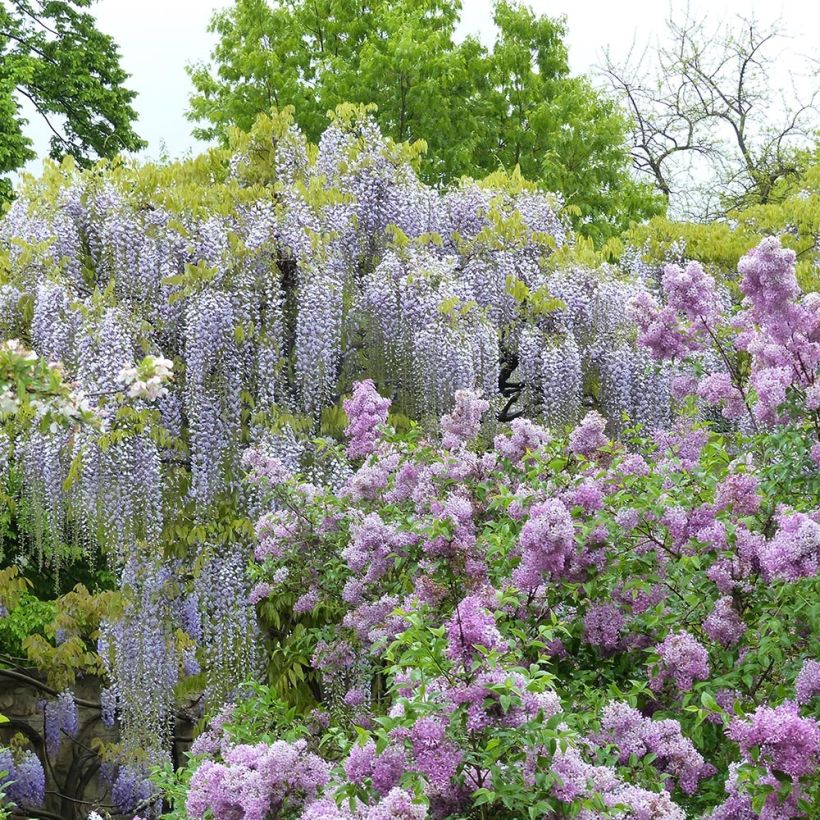

Plant habit
Flowering
Foliage
Botanical data
Wisteria
floribunda
Macrobotrys De Belder
Fabaceae
Japanese Wisteria
Cultivar or hybrid
Other Wisterias
View all →Planting and care
The Japanese Wisteria is an easy-to-grow plant in all areas as long as the soil it is planted in is deep enough. It can grow in any garden soil, with a preference for poor soils. However, it prefers an acidic to neutral soil and may wither in overly alkaline soil. Once established, it can withstand summer drought and does not require watering, even in the Mediterranean. Plant it along a wall or train it on a pergola. Pruning is recommended for better flowering: in March-April, after the last frost, when the buds have appeared, cut the current year's shoots back to two or three buds and remove weak branches. Training pruning should be done in August. To improve the hardiness of Wisteria floribunda, which is already quite hardy, plant it in well-draining soil, trained on a south-facing wall, and it will better withstand harsh winters.
Wisterias can be trained as trees by growing them on a "parasol" stake of 1.5 to 2m (5 to 7ft), or used as ground cover in a large wild garden.
Planting period
Intended location
Care
Planting & care advice
-
, onOrder confirmed
Reply from on Promesse de fleurs
Similar products
Haven't found what you were looking for?
Hardiness is the lowest winter temperature a plant can endure without suffering serious damage or even dying. However, hardiness is affected by location (a sheltered area, such as a patio), protection (winter cover) and soil type (hardiness is improved by well-drained soil).

Photo Sharing Terms & Conditions
In order to encourage gardeners to interact and share their experiences, Promesse de fleurs offers various media enabling content to be uploaded onto its Site - in particular via the ‘Photo sharing’ module.
The User agrees to refrain from:
- Posting any content that is illegal, prejudicial, insulting, racist, inciteful to hatred, revisionist, contrary to public decency, that infringes on privacy or on the privacy rights of third parties, in particular the publicity rights of persons and goods, intellectual property rights, or the right to privacy.
- Submitting content on behalf of a third party;
- Impersonate the identity of a third party and/or publish any personal information about a third party;
In general, the User undertakes to refrain from any unethical behaviour.
All Content (in particular text, comments, files, images, photos, videos, creative works, etc.), which may be subject to property or intellectual property rights, image or other private rights, shall remain the property of the User, subject to the limited rights granted by the terms of the licence granted by Promesse de fleurs as stated below. Users are at liberty to publish or not to publish such Content on the Site, notably via the ‘Photo Sharing’ facility, and accept that this Content shall be made public and freely accessible, notably on the Internet.
Users further acknowledge, undertake to have ,and guarantee that they hold all necessary rights and permissions to publish such material on the Site, in particular with regard to the legislation in force pertaining to any privacy, property, intellectual property, image, or contractual rights, or rights of any other nature. By publishing such Content on the Site, Users acknowledge accepting full liability as publishers of the Content within the meaning of the law, and grant Promesse de fleurs, free of charge, an inclusive, worldwide licence for the said Content for the entire duration of its publication, including all reproduction, representation, up/downloading, displaying, performing, transmission, and storage rights.
Users also grant permission for their name to be linked to the Content and accept that this link may not always be made available.
By engaging in posting material, Users consent to their Content becoming automatically accessible on the Internet, in particular on other sites and/or blogs and/or web pages of the Promesse de fleurs site, including in particular social pages and the Promesse de fleurs catalogue.
Users may secure the removal of entrusted content free of charge by issuing a simple request via our contact form.
The flowering period indicated on our website applies to countries and regions located in USDA zone 8 (France, the United Kingdom, Ireland, the Netherlands, etc.)
It will vary according to where you live:
- In zones 9 to 10 (Italy, Spain, Greece, etc.), flowering will occur about 2 to 4 weeks earlier.
- In zones 6 to 7 (Germany, Poland, Slovenia, and lower mountainous regions), flowering will be delayed by 2 to 3 weeks.
- In zone 5 (Central Europe, Scandinavia), blooming will be delayed by 3 to 5 weeks.
In temperate climates, pruning of spring-flowering shrubs (forsythia, spireas, etc.) should be done just after flowering.
Pruning of summer-flowering shrubs (Indian Lilac, Perovskia, etc.) can be done in winter or spring.
In cold regions as well as with frost-sensitive plants, avoid pruning too early when severe frosts may still occur.
The planting period indicated on our website applies to countries and regions located in USDA zone 8 (France, United Kingdom, Ireland, Netherlands).
It will vary according to where you live:
- In Mediterranean zones (Marseille, Madrid, Milan, etc.), autumn and winter are the best planting periods.
- In continental zones (Strasbourg, Munich, Vienna, etc.), delay planting by 2 to 3 weeks in spring and bring it forward by 2 to 4 weeks in autumn.
- In mountainous regions (the Alps, Pyrenees, Carpathians, etc.), it is best to plant in late spring (May-June) or late summer (August-September).
The harvesting period indicated on our website applies to countries and regions in USDA zone 8 (France, England, Ireland, the Netherlands).
In colder areas (Scandinavia, Poland, Austria...) fruit and vegetable harvests are likely to be delayed by 3-4 weeks.
In warmer areas (Italy, Spain, Greece, etc.), harvesting will probably take place earlier, depending on weather conditions.
The sowing periods indicated on our website apply to countries and regions within USDA Zone 8 (France, UK, Ireland, Netherlands).
In colder areas (Scandinavia, Poland, Austria...), delay any outdoor sowing by 3-4 weeks, or sow under glass.
In warmer climes (Italy, Spain, Greece, etc.), bring outdoor sowing forward by a few weeks.






























